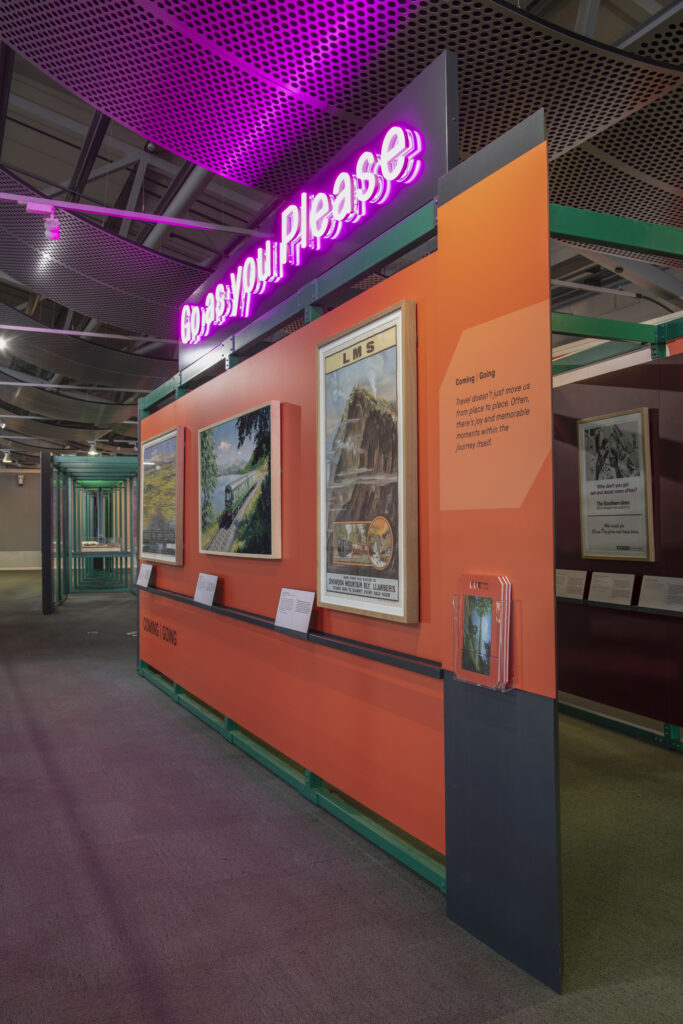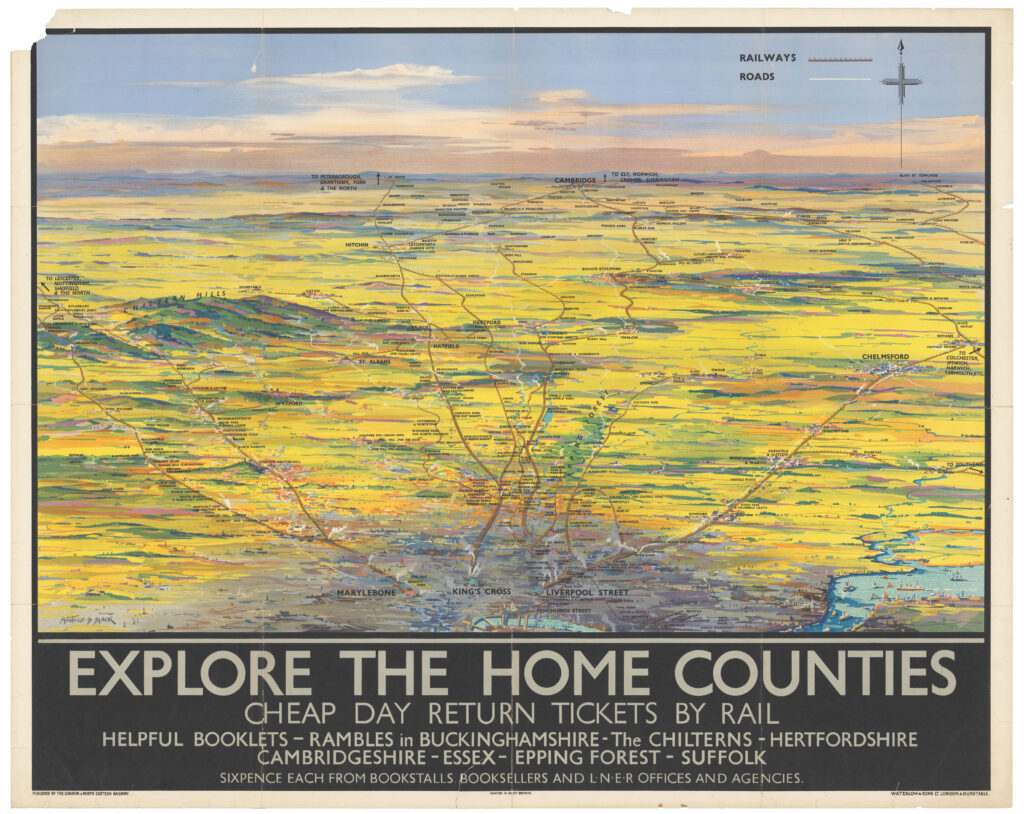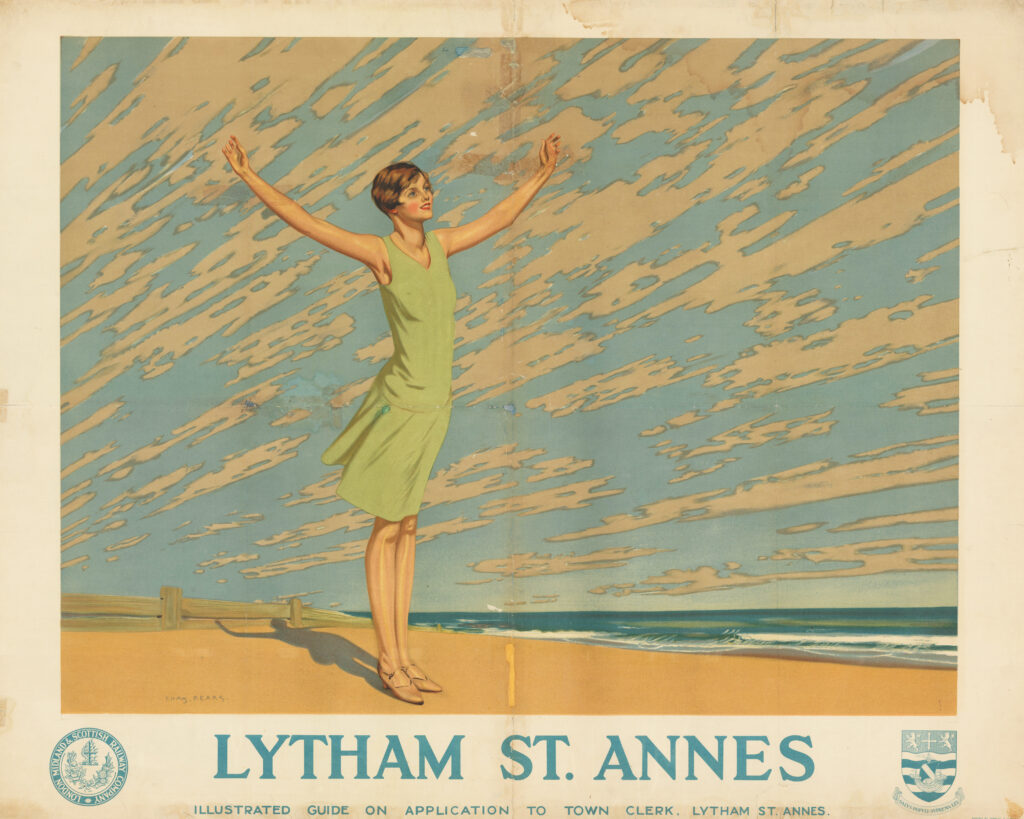Enjoy this article?
Most Museums Journal content is only available to members. Join the MA to get full access to the latest thinking and trends from across the sector, case studies and best practice advice.
This review hasn’t exactly worked out as planned. I’d actually been dispatched to the Bowes Museum in County Durham to take a look at its latest exhibition, Murmuration. After two replacement bus services and one cancelled train, I got as far as Darlington before turning back in despair.
Determined not to come back empty handed, I popped into the National Railway Museum to see Curating for Change’s – a scheme for D/deaf, disabled and neurodivergent curatorial trainees – latest exhibition, Go as you Please, by curator Amy Thraves-Connor.
Curator Amy Thraves-Connor will reflect on the experience of developing the Go as you Please exhibition at our annual online conference on 8 May 2024.
I’m glad I did, as this exhibition is one of my heritage highlights of the past 12 months. It’s not often that you see a show that truly makes you check your privilege and see the world through new eyes.
Curating for Change has had quite the impact on the UK museum sector. Its curatorial fellows have been shining a light on stories centring on the experience of living with a disability, bringing new perspectives to collections from Hastings to Leeds.
Embedded in their host museums for 18 months, the fellows have been shaking things up through a series of exhibitions, interventions and films that champion a new way of seeing D/deaf and disabled people.

Thraves-Connor has focused on the National Railway Museum’s extensive collection of advertising posters. Drawing on her own interest in landscape drawing, she has selected works that invite a wanderlust for travel in the viewer.
Through exploring what these images mean to D/deaf and disabled travellers who might not always be able to act on that impulse, she has created a powerful statement on the impact of ableism in the UK rail network.
Go as you Please is by no means a big exhibition, but it packs a concise punch over three well thought-out sections. Housed on the Search Engine Balcony on the first floor of the museum, the design is a simple yet striking freestanding structure topped with bright-pink, neon-lit signage.
Focus on Curation
The main goal of my Curating for Change fellowship was to curate a temporary exhibition that highlighted disability stories. I spent hours trawling our online object catalogue, but objects that related to disability were few and far between. A few old station wheelchairs; a pamphlet on the ways the railway is accessible to disabled people; one prosthetic limb from an injured railway worker. These things did not excite me.
What struck me was the fact that disabled people exist in the world, so every object can be interpreted through the lens of disability. We don’t only relate to “disability objects” – disability stories shouldn’t be pigeonholed like that.
This idea gave me freedom and I was drawn to our art collection. We have thousands of paintings and posters from rail companies that advertise places you can visit by train and the freedom travel can offer. While few of them show disabled passengers, my approach was to use them as a prompt to discuss our stories, spot-lighting that disabled people do travel and have experiences, whatever they may be.
I worked with a group of other disabled people from York. We looked at artworks and at how they related, or didn’t, to our experiences of travel, whether they stimulated memories or questions. I then shared our stories alongside the display of these artworks. If visitors come to an exhibition and read one story about a disabled person’s experience, that is a good thing.
Amy Thraves-Connor is a Curating for Change fellow and is speaking at All Inclusive: Championing Accessible Museums, a Museums Association one-day conference, on 8 May
The exhibition begins with an access hub that includes a BSL-interpreted introduction, QR codes for audio descriptions, ear defenders and easy read labels.
Thinking back, I’m struck by how little I noticed the small alterations that had been made in the design to make it more accessible. There were simple things, such as the label and picture height being lower to account for wheelchair users, and the more accessible slant on the comments card table to assist when writing.
The changes seemed straightforward and left me wondering why all exhibitions weren’t like this.
Indeed, the exhibition design embodies how a social model of disability can be put into practice. It simply shows that making life easier for some people doesn’t mean that it has to take something away from someone else.
A particularly nice touch was that the BSL interpreter used in one of the films is the same person currently used on the rail network to inform passengers of train delays. It all felt so natural, yet so comprehensive and carefully thought-out.
The exhibition is interpreted through a series of contrasts that brought my own privilege sharply into focus. My journey to get to the museum had been a nightmare, but I had no hesitation in trying to make it.
It didn’t even occur to me that I might not be able to physically get onto the train let alone the platform. I didn’t need to plan ahead or request assistance. There was never any fear that I wouldn’t know when my stop was, or that I might not be able to understand safety information. These are all things that I won’t take for granted having now visited this exhibition.

Go as you Please begins with a 1936 poster, Explore the Home Counties, by Montague Birrell Black. It’s a sprawling idealised view of the countryside outside of London, showing the escape routes from the grimy grey capital city in the bottom of the image to the verdant promise of adventure in the home counties. So far, so gentle.
Yet reading wheelchair user Thraves-Connor’s description of the piece, written with a member from her co-curation team, you realise that the opportunity for adventure that these posters sell to some people can represent uncertainty and anxiety to those in different situations.
What I especially admire about this exhibition is the defiance and affirmation of Thraves-Connor and her co-curation group. You hear it loud and clear in the show’s title. Go as you Please seems a passive invitation to proceed, yet in the context of this exhibition it comes across as a radical call for equity and a recognition that one size does not fit all.
Despite the barriers that seem to stand in the way, D/deaf and disabled people do revel in the freedom of travel.
This comes across clearly in the section on Expectation and Experience where the print Lytham St Annes by Charles Pears shows a young woman at the coast, arms outstretched as the clouds race high above her head. Close your eyes and you can almost smell the salty scent of freedom.
It’s an exhilarating image and one that has been used to highlight the liberty that rail travel arguably brings to D/deaf and disabled people who might not otherwise be able to independently use other forms of transport.

Further on, a poster for Southern Rail, showing a black-and-white photo of a white, non-disabled family asks: “Why don’t you get out and about more often?”.
It is meant as a gentle prompt to sell more tickets, but for those whose disabilities are hidden it must echo the harsh micro-aggressions they are subjected to by those who don’t or won’t understand their conditions.
A real strength of this exhibition and of Thraves-Connor’s curation is the way that she is able to reclaim this language and show that it is by no means true. As she writes: “We do get out and about.”
Go as you Please is an exhibition with a point to prove. It shows, through both its form and content that it is only the societal barriers placed in their way that make passengers “disabled”.
Take these away and the impulse for adventure and travel burns bright.
Jamie Taylor is the director of collections and programmes at the Thackray Museum of Medicine in Leeds
Most Museums Journal content is only available to members. Join the MA to get full access to the latest thinking and trends from across the sector, case studies and best practice advice.